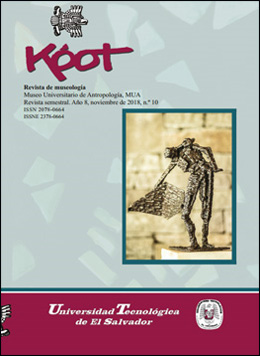Los cumpas de la cordillera San Lucas Cuisnahúat y San Cristóbal de Jayaque
DOI:
https://doi.org/10.5377/koot.v0i10.6704Palabras clave:
Religiosidad, Indígenas, Cultura, Identidad cultural, CompadresResumen
Una inundación da sentido a la tradición de los cumpas, el hermanamiento de los pueblos incluye a los santos y la comunidad y sirvió originalmente para alojar a quienes habían sufrido del desborde del río. Es la excusa perfecta para efectuar la introducción de un elemento religioso, los santos se convierten en compadres de tal forma que tienen el compromiso de visitarse mutuamente cada año para mantener la tradición.
Cabe preguntarse si el sincretismo que se adopta en el ritual tradicional es el resultado de que la tradición de visitarse entre los comunitarios de los pueblos indígenas viene desde muchos antes de la llegada de la evangelización por parte de los españoles. En el recorrido a lo largo del camino entre San Lucas y San Cristóbal, que culmina con la topa de los cumpas hay caminata, intercambio de regalos, fraternización, baile, chicha y chaparro. Después de algunos meses, inicia el camino de vuelta.
El encuentro sirve además para bailar, entretenerse y beber. La iglesia institucional prefiere asumir que no le interesa la fiesta popular, solo el acto solemne.
Descargas
2486

